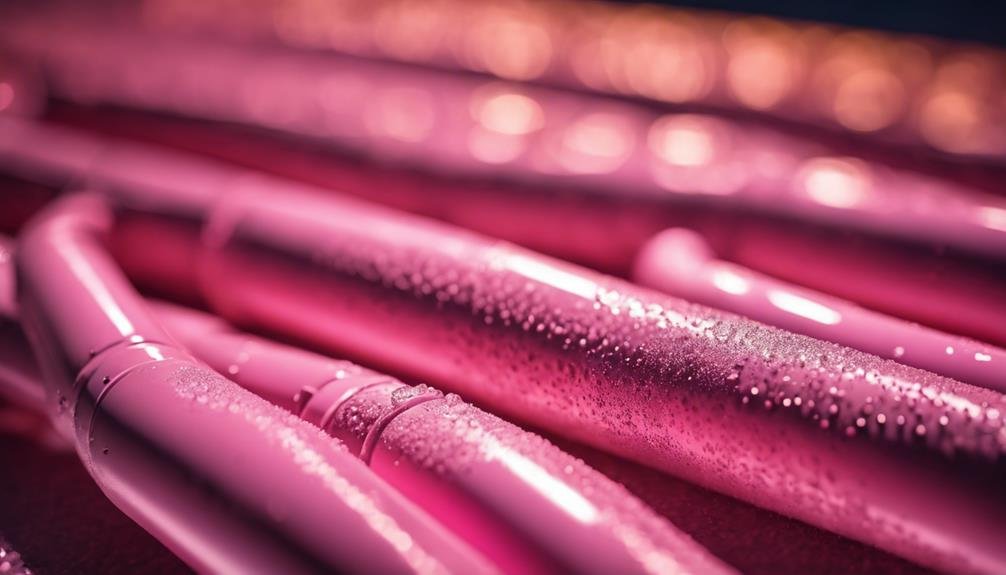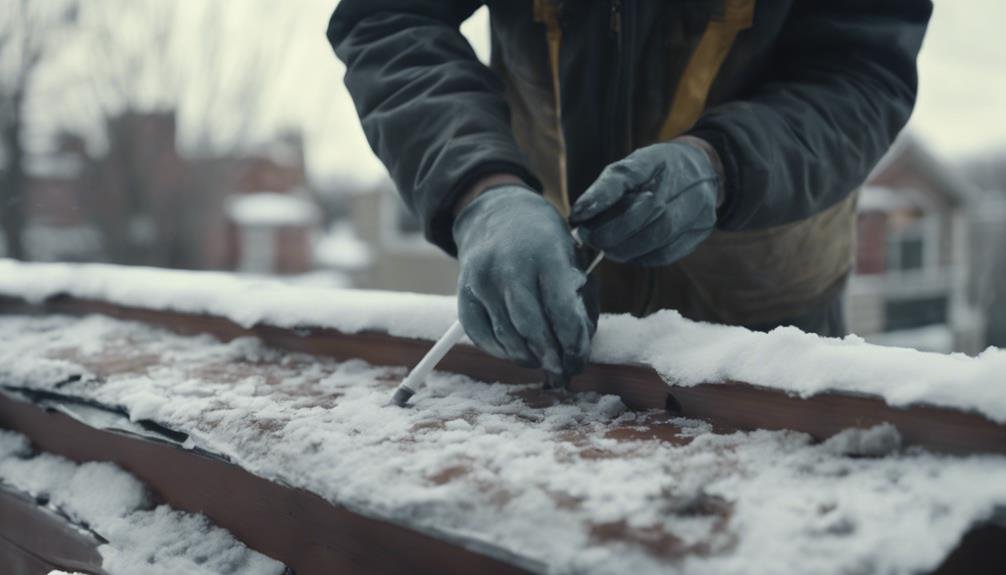During the winter months, it's crucial to promptly address any leaks in your home to prevent further damage. Our thorough inspection process involves checking for signs of moisture both indoors and outdoors, and we utilize specialized tools like moisture meters to locate hidden leaks. If necessary, we will remove materials to pinpoint the exact source of the leak.
Some of the links in this article may be affiliate links. If you make a purchase through these links, we may earn a small commission at no extra cost to you. Thank you.
To temporarily seal leaks and prevent additional issues, we keep essential tools such as wrenches, putty, and repair supplies on hand. It's also important to insulate exposed pipes to avoid freezing in the future.
For a more permanent solution, we replace cracked pipes or components and seal any gaps with caulk. In cases where leaks are significant, seeking the expertise of a contractor may be necessary.
By taking these proactive steps and using the right techniques, you can effectively address winter leaks and gain valuable repair skills to maintain your home.
Identify Leak Sources
Identifying the source of a leak is crucial before starting any repair work to efficiently address the underlying issue. The first step is to carefully examine the area where the leak is occurring, checking for visible signs of water damage or moisture. It's important to inspect both the inside and outside of the affected area, as the leak could originate from either side.
After determining the general location of the leak, specialized tools like moisture meters or cameras are used to trace its path. These tools can detect hidden moisture behind walls or floors, ensuring that no concealed sources are missed.
In some cases, it may be necessary to remove sections of drywall, flooring, or siding to fully expose the affected area and pinpoint the exact entry point of the leak. Leaks can sometimes have multiple sources or follow unexpected paths, so a thorough and diligent inspection is essential.
Prepare Necessary Tools
To effectively address leaks during winter, it's crucial to gather the necessary tools for efficient and safe repairs. Before getting started, make sure to have a flashlight for clear visibility of the leak source, adjustable wrenches or pliers to shut off water supply valves, a bucket to catch dripping water, rags or towels for cleaning up, and any replacement parts like washers or hose connectors.
Depending on the type of leak, additional specialized tools may be needed. For instance, fixing a leaky faucet may require plumber's putty, a faucet repair kit, and a basin wrench. Repairing a toilet leak might involve using a toilet repair kit with components like a new flapper or fill valve. Outdoor leaks near hose bibs may call for insulation, heat cables, or heat tape to prevent freezing.
It's essential to have all the tools on hand before beginning any repair to work efficiently and prevent further damage from the leak. With proper preparation, you'll be well-equipped to tackle winter leaks effectively.
Insulate Exposed Pipes

Once you have gathered the necessary tools, it's essential to insulate any exposed pipes to prevent freezing. Insulation is crucial as it helps to regulate the temperature of the pipes, reducing the risk of cracks or bursts caused by water expanding in extremely cold weather.
Start by checking for any pipes running along exterior walls, in unheated areas like attics or crawl spaces, or outdoors. Use fiberglass pipe insulation sleeves that fit securely around the pipes and fasten them with tape or wire.
For larger pipes, wrap them with fiberglass insulation batting, securing it tightly with zip ties or tape to eliminate any gaps where cold air could seep through.
In cases where insulation isn't feasible, consider using heat cables or heat tape specifically designed for this purpose. These heating elements help to keep the pipes warm and prevent freezing. It's essential to follow the manufacturer's instructions carefully when installing them to ensure proper functionality.
Temporary Leak Sealing
When dealing with pipe leaks that require a temporary solution before permanent repairs can be made, there are several effective methods we can use. For minor leaks, epoxy putty or pipe repair tape are simple yet reliable options. These products are readily available at hardware stores, easy to apply, and create a quick and watertight seal that can last for weeks or even months.
In the case of more significant leaks, a pipe repair clamp or sleeve may be necessary. These metal bands wrap tightly around the damaged area and compress a rubber gasket to stop the leak. While these solutions aren't permanent, they can effectively contain the leak until a professional plumber can replace the damaged section of the pipe.
In situations where the leak is hard to reach or isolate, shutting off the water supply to that specific section of plumbing may be required. This involves locating the shut-off valve and turning it clockwise until the water flow stops. It's important to remember that residual water in the pipes will need to be drained after shutting off the supply.
Regardless of the temporary solution used, it's crucial to address the root cause of the leak promptly. Extended leaks can lead to significant water damage, mold growth, and increased repair expenses.
Permanent Repair Methods

When dealing with leaks, temporary solutions can only do so much. To effectively fix leaks for good, we must focus on permanent repairs by identifying and tackling the root cause of the issue. This may involve replacing worn-out materials, sealing cracks and gaps, or addressing underlying structural problems.
One effective method for permanent repair is using sealants or caulking compounds. These flexible materials are great for filling in gaps and cracks to prevent water from seeping in. It's crucial to prepare the surface properly to ensure the best adhesion and long-lasting results.
Sometimes, it's necessary to replace damaged components like pipes, roof shingles, or flashing to fully resolve the issue. Always follow the manufacturer's instructions for correct installation and make sure the new materials are compatible with the existing ones.
In cases of severe leaks or significant structural damage, seeking help from a licensed contractor is advisable. They've the skills and equipment to diagnose and fix complex problems, ensuring a durable and compliant solution.
Regardless of the repair method chosen, it's essential to address leaks promptly to avoid further damage and potential safety risks. By using the right approach and materials, we can achieve a watertight seal that will withstand the elements for years to come.
Conclusion
Don't let winter leaks get you down – with the right tools and knowledge, we can easily fix them up.
Cold temperatures may pose a challenge, but by following the correct steps, we can ensure our plumbing remains in top condition.
The methods we're about to discuss will be our go-to guide for tackling those stubborn leaks this winter.
Let's dive in and conquer those pesky drips with confidence.

